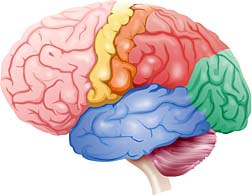Researchers also found that the toxin moved from the hippocampus on one side of the brain to the hippocampus on the other side of the brain. The hippocampus is responsible for spatial navigation and long-term memory. The toxin then moved from the superior colliculus and then to the eye. The superior colliculus is what is responsible for head-eye coordination.
 The study found that when Botox was injected, there was a disruption of cell activity in areas that were distant but connected to each other. The author of the study, Matteo Caleo, said the finding is a concern and said that the effects that Botox had on the hippocampus was still present six months after the injection. However, he does state that more work is needed to gain a better understanding of how the drug spreads along the nerves and how to perhaps prevent the spread from happening.
The study found that when Botox was injected, there was a disruption of cell activity in areas that were distant but connected to each other. The author of the study, Matteo Caleo, said the finding is a concern and said that the effects that Botox had on the hippocampus was still present six months after the injection. However, he does state that more work is needed to gain a better understanding of how the drug spreads along the nerves and how to perhaps prevent the spread from happening.Dr. Christopher Von Bartheld of the University of Nevada School of Medicine said that it was thought that Botox only acted locally, but the new research shows how it can travel along axoms to areas along the central nervous system that are considered distant from the injection site. As a result, it can have a long-lasting effect on neuronal function.
READ MORE LEGAL NEWS
Two weeks before this February 2008 warning, the FDA was petitioned by the nonprofit organization Public Citizen to strengthen their warnings on the drugs because of a reported 16 deaths and 180 others dealing with such issues as fluid in their lungs, pneumonia, and difficulty swallowing.
The FDA is currently looking into reports of illnesses as a result of Botox and Myobloc use. One of these investigations includes a woman who was hospitalized after receiving treatment for forehead wrinkles.
As for the new study, it is suggested that the dosage and the concentration of the drug are key factors as to whether or not Botox spreads to the brain.
By Ginger Gillenwater
